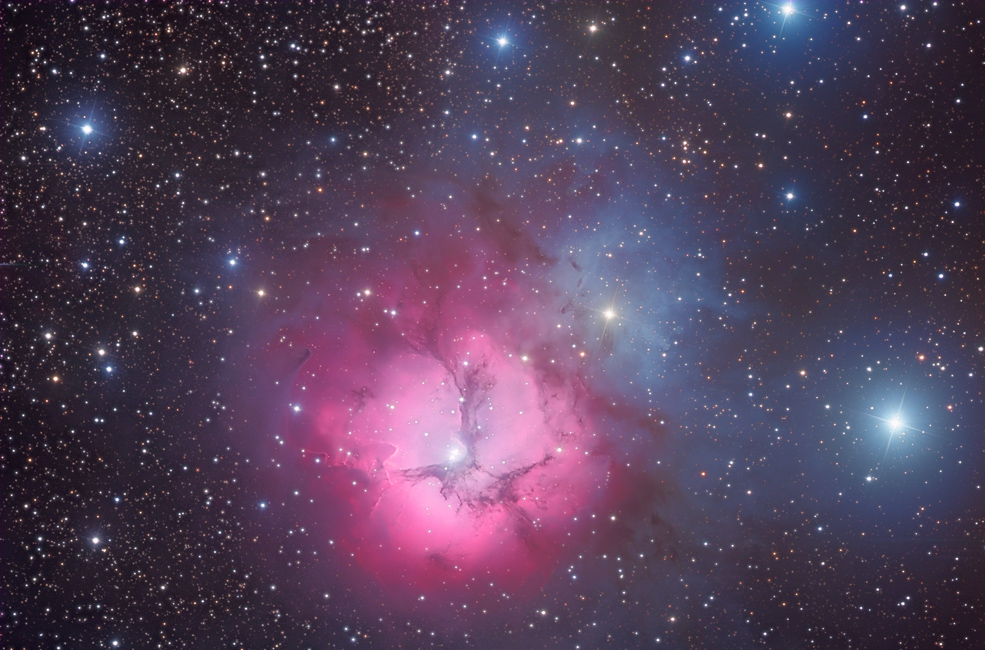
Trifid Nebula: The Trifid Nebula (cataloged as Messier 20) is so called because it appears to have three lobes in the reddish part. This is a star-forming region, which includes an emission nebula
(the reddish part), reflection nebula (blue part) and dark nebulae (the dark parts that appear to divide the emission nebula). The Trifid Nebula is approximately 5,200 light years from us, about 40
light years across, and glows brightly at an apparent magnitude of 6.3 (meaning possibly visible to the naked eye in the very darkest skies).
I previously photographed this with my small scope, as part of a much larger field, in
Trifid Nebula and Lagoon Nebula photo.
I have presented the image here in two forms: A color version, and a gray-scale version showing only the Ha emisssions (click on the image to toggle between the two versions). I think it's interesting
how graphically this comparision shows that the Ha emissions are only a part of the red spectrum; the blue parts of the color image surrounding the red nebula largely disappear in the Ha version.
Copyright 2015 Mark de Regt